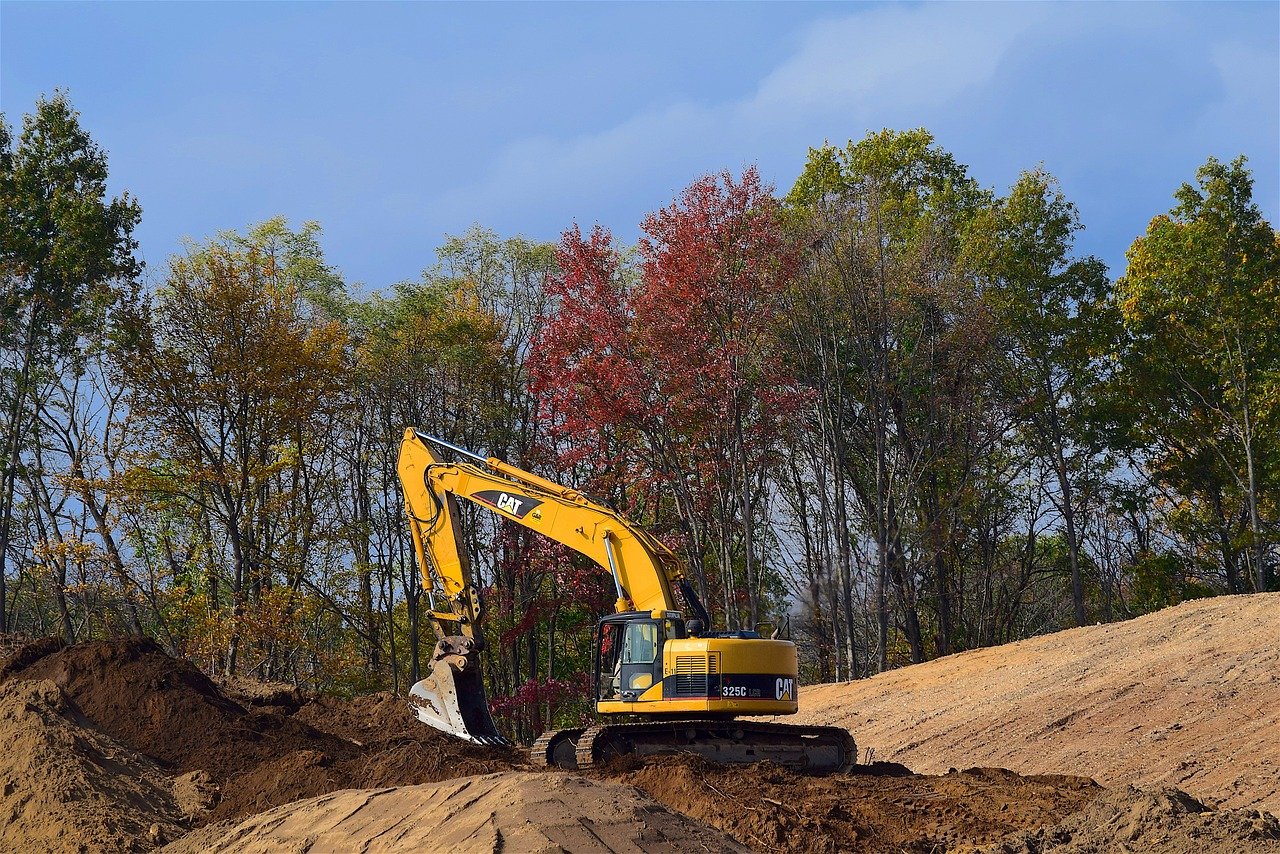Trees add significant value to our homes and properties. They provide shade, keep the air clean, and improve the appearance of the landscape. When selecting a site for construction, trees and shrubs can be a great asset.
Unfortunately, the process involved in setting up new buildings can be deadly to the nearby trees. Often, the effects of tree injuries are not noticeable until several years after the project completion. And the consequent need to remove a tree can be costly due to the newly created obstacles.
Proper planning is, therefore, necessary to ensure tree protection during construction. It helps minimize damage, allowing the trees to grow healthy during and after construction.
Causes of Tree Damage During Construction
Root Cutting
The digging and grading associated with erecting new buildings and installing underground utilities can be quite damaging to a tree’s root system. It is important to dig far away from the tree to avoid cutting the roots and compromising tree health and stability.
Injury to Crown and Trunk
Construction equipment can cause injuries to the parts of the tree above the ground by breaking limbs and branches, peeling the bark, or wounding the trunk. If these injuries are extensive, they can kill the tree.
Piling Up Soil around the Base
While soil provides the minerals and nutrients required for tree growth, having it piled over the root system can smoother fine roots responsible for water and mineral absorption, which can eventually lead to the death of larger roots.
Soil Compaction
For trees to grow effectively, the soil in which they are planted should contain about 50% pore space for air and water movement. Hefty building equipment can compress soil, dramatically reducing pore space. This hinders root growth, reduces water penetration, and limits oxygen intake, which negatively impacts tree health.
Seeking Advice
To ensure proper tree preservation during construction, it is recommended that property owners work with a professional like The Local Tree Experts. A tree expert will examine the health and structure of trees and shrubs on the construction site and propose measures to protect and preserve them.
Not all trees on your property will need preservation. An arborist will assess the species, age, size, condition, and location of each tree to determine which one needs retaining. They will advise you about which species are more sensitive to root damage, compaction, or grade changes.
Your arborist and builder/equipment operator should work hand in hand in the planning stage of construction. This will ensure that changes in the design or placement of the building will not affect the survival of a critical tree.
3 Ways to Protect Trees During Construction
Once you have identified which trees to retain, use the following tips to preserve them:
1. Protect From Mechanical Damage
Mechanical injuries often result from equipment operators bumping into trees, scraping their barks, or breaking their branches. To protect your trees from such injuries, plant large physical barriers such as a plastic fence around each tree or group of trees being retained. Clear any bush and brushwood near and around the trees by hand rather than equipment if possible.
2. Avoid Changing the Soil
When a tree starts to grow, it adapts to the surrounding soil. During construction, it is possible to alter the soil, which often places trees under stress. One way to help your trees survive after construction is preserving their root system during the project, and preventing soil compaction is a great place to start. As mentioned earlier, compressing the soil usually blocks the pores through which air, water, and minerals pass and penetrate the roots.
You can prevent this by making sure your equipment handlers are not driving over the trees’ root system. To achieve this, set up barriers around the root system, apply mulch, and/or bridge the roots with steel or posts. You may also consider transporting concrete above the ground using conveyor pipes rather than moving it by trucks.
But compaction is not the only cause for soil alteration; changing the soil grade also alters the original depth of the root system. For instance, roots that were initially 8 inches deep could (due to filling dirt) become 20 inches deep after the project, which could easily lead to root rot. If you must lower the grade, use a retaining wall to protect the larger part of the root system, and if you must raise the grade, use loose stones to allow proper circulation of air and water.
3. Reroute Trenches
Trenches are an important part of the construction, as they help bury utilities. However, if they are not routed right, they could cause significant damage to your trees. The best way to create trenches is by routing them around trees. For larger trees, have trenches routed as farther away as possible. Alternatively, use a power-driven soil auger to make a tunnel underneath the tree and minimize root damage.
How to Care for Trees After Construction
After construction, any stressed or injured trees should be properly cared for to get them back in shape. Water the trees regularly during the growing season, preferably twice or thrice a week for at least one year. Do not just focus on the base of the trunk; make sure you are watering the entire root system.
Additionally, apply fertilizer high in phosphorus to promote root growth. This is especially important if the root system was damaged. During winter, trim damaged or dead branches.
Consider mulching too. A layer 3 to 4 feet deep that extends about 6 feet out from the trunk would be great. Keeping the mulch a few feet from the tree helps reduce root rot, hinders suckering, and minimizes the possibility of bark feeding by rodents.
It may take several years for trees to adjust to the damage, environmental changes, and stress that occur during construction. When a tree is stressed, it is more susceptible to diseases, pest infestations, and other health problems. Your arborist can suggest the best ways to care for your trees to help them recover quickly.







